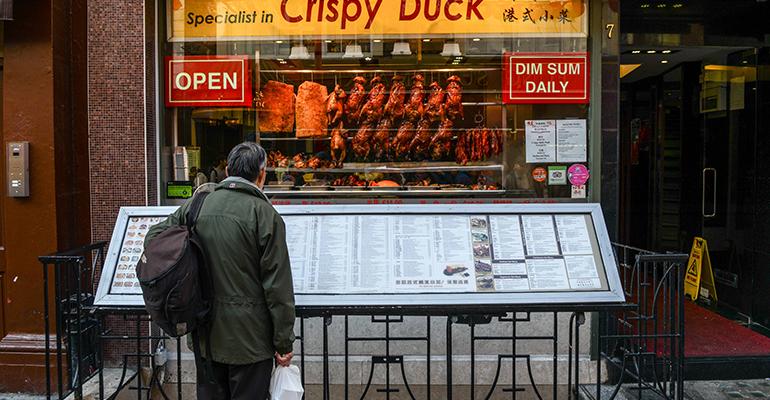Despite your best efforts, your menu prices will eventually need to increase, whether it’s due to increased ingredient costs or as a means to pay for your growing staff. The question then becomes when to introduce those increases, and how to handle decreases when, and if, necessary. We enlisted the help of four restaurateurs to find out the answers.
Pair price changes with scheduled menu reprints.
Matt Bailey, partner at Elm City Social in New Haven, CT, says that his restaurant’s prices are evaluated quarterly and changed at the same time as seasonal menus, resulting in minimal reaction from customers. “A great time for us to make changes in price has been when we debut seasonal menus,” says Bailey. “We’ve raised and lowered prices with the reprints, some due to supplier price changes and others due to the competitive landscape changing in our area.”
Raise prices around a signature item.
Do you have a best-selling menu item that can remain the same price while charges for other items increase? That’s been a winning tactic at George Bowers Grocery in Stanton, VA, for the past eight years, according to co-owner Katie McCaskey. “We've raised prices every year,” says McCaskey. “Our approach is to have one anchor ‘pricey’ item, in our case, a $20 hamburger, and then raise everything else in small, incremental amounts once a year.”
Talk with your supplier before raising prices.
If you’ve been raising prices due to ingredient costs, try working with your suppliers to bring some of those everyday costs down. “We talk to suppliers when we see prices change to see if it’s a temporary supply issue or if it’s a bigger, more long-term, problem that will not simply correct in a couple weeks,” says Bailey. “We work with them to see what alternate products may be available that could swap into our menu, and also keep our eyes open for specials or items that we don't regularly stock that we can bring in as a special that can help us bring costs down to offset something that may have gone up in price.”
Tread lightly when lowering prices.
While many restaurateurs are vehemently against lowering prices, some have found success with raising and lowering prices at the same time. “If you’re going to raise prices, look for any items that can be lowered,” says Thomas Nguyen, partner and c.m.o. at Peli + Peli, Houston, where prices rise and fall at least once a year due to the rising costs of ingredients. “No customer will like rising prices, so if you can lower prices where you can, they will appreciate it more.”
Another reason some owners lower the price of certain menu items is to maintain their restaurant’s concept. “We have moved a few items down in the last six months to help them become more attractive to customers to purchase,” says Bailey. “These are items that still maintain a strong margin, or are dishes that we feel represent our concept really well that we want to make sure are getting on the tables and into the customer’s mouth.”
Do you have a menu item that you’re thinking of raising—or lowering—the price of significantly? Study your sales numbers and you may find that the best option is to remove them altogether and focus on your best sellers. “We had some wines that in order to make proper margins we had to charge amounts that our guests wouldn't pay, so they sat on the shelf,” says Bailey. “We relooked and removed some of them from the menu. We've found that when we focus on our top 20 items in food and beverage, small changes on those can help make sure our overall costs stay in line.”
Nguyen agrees. “If you have to raise a price on an item, see if you even need it,” he advises. “We hate raising prices and have removed items from the menu if it becomes too cost-prohibitive or isn’t that popular.”
Raise the perceived value of an item before raising the price.
“Customers tell you every day how much they perceive the value of your menu items to be by either purchasing or not purchasing them,” says John Kunkel, founder and c.e.o. of Miami-based 50 Eggs. “There’s a lot you can do to raise the perceived value of an item through replating, using different cuts of meat and thinking outside the box.”





